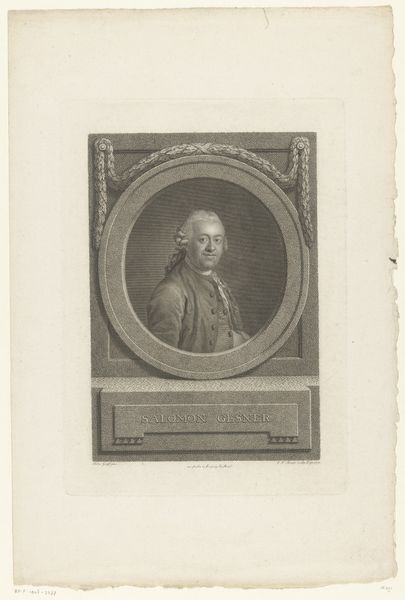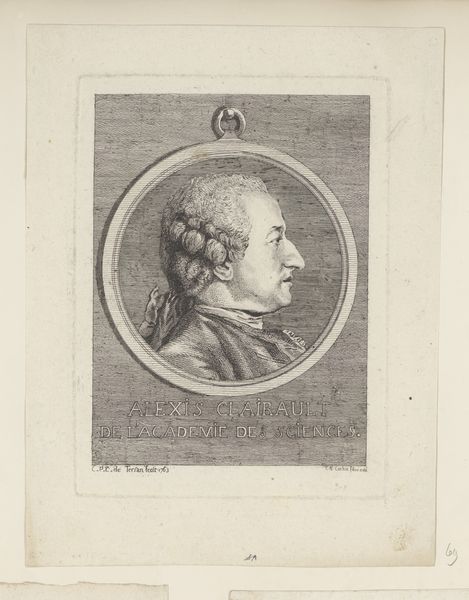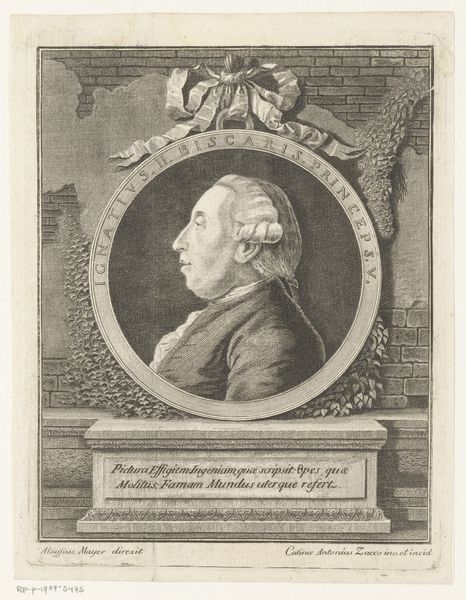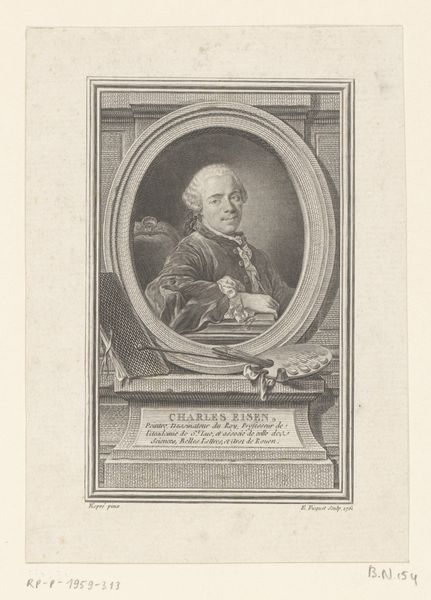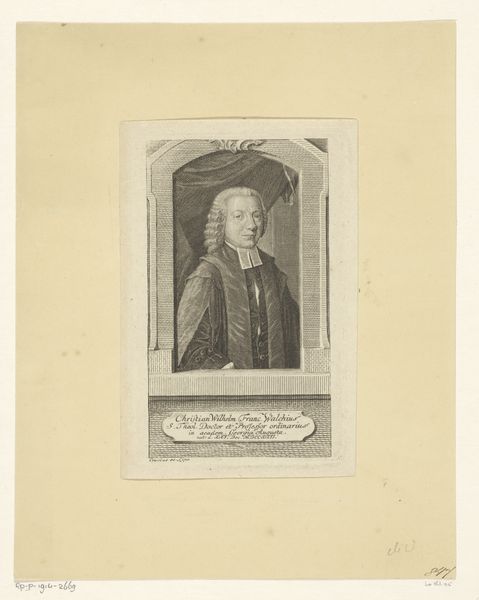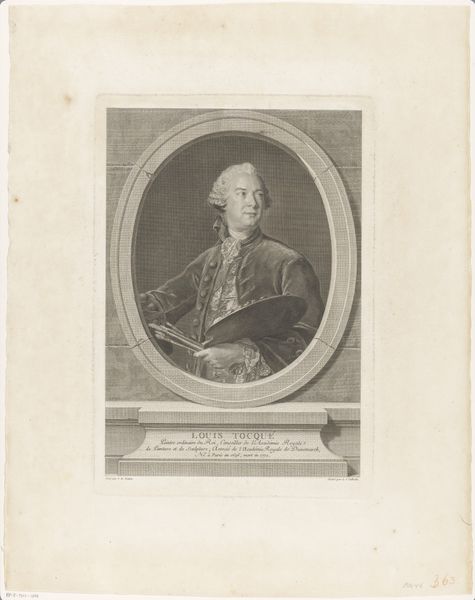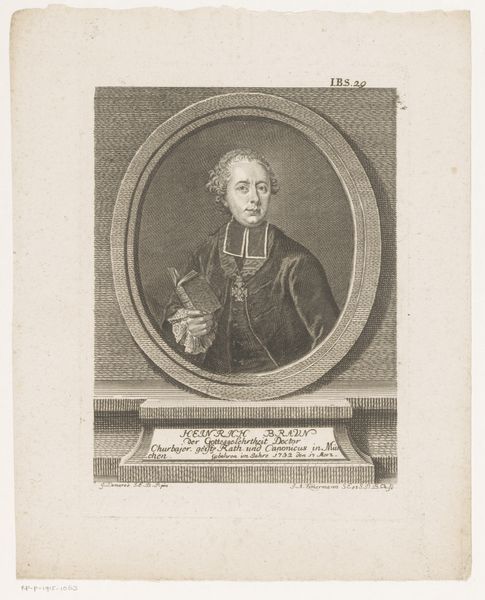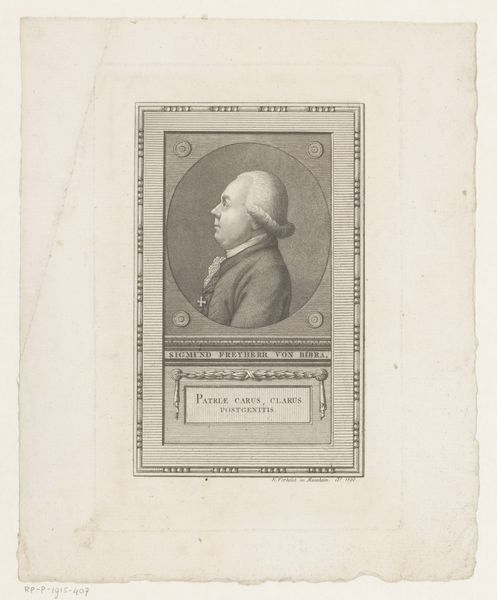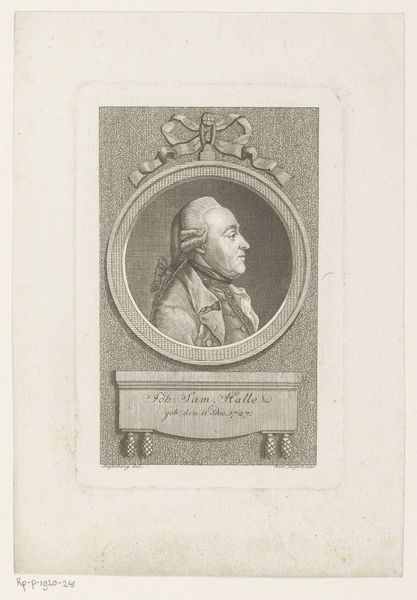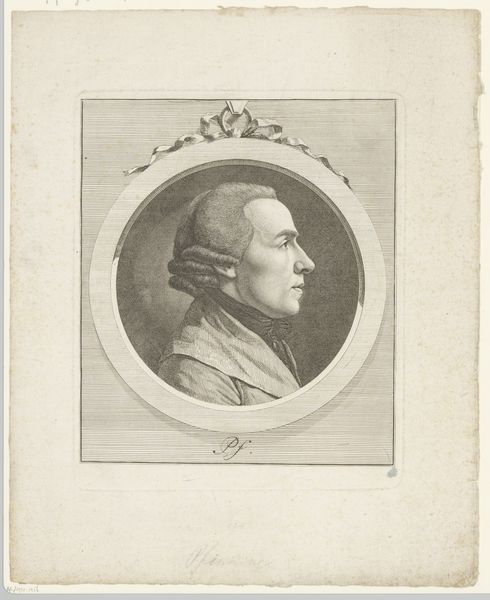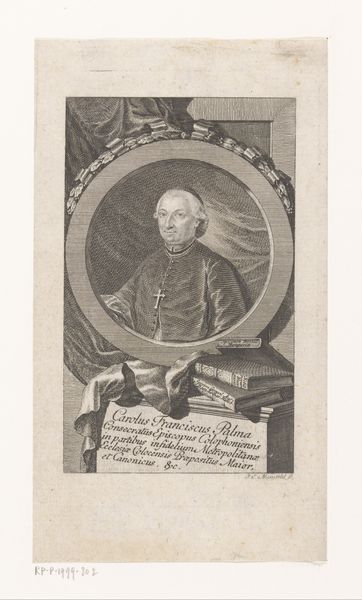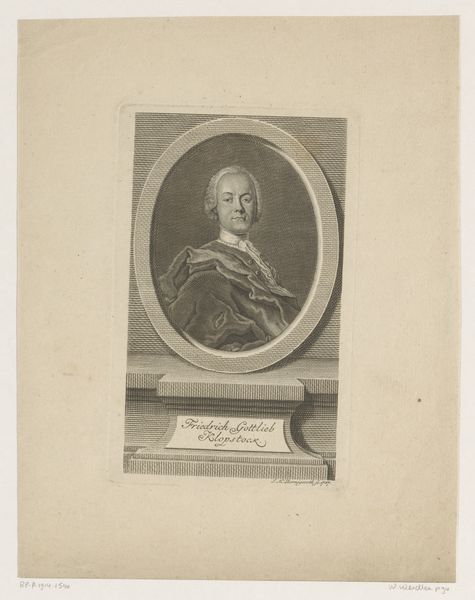
#
pencil drawn
#
aged paper
#
toned paper
#
light pencil work
#
photo restoration
#
pencil sketch
#
old engraving style
#
personal sketchbook
#
old-timey
#
19th century
Dimensions: height 180 mm, width 104 mm
Copyright: Rijks Museum: Open Domain
Curator: This portrait, created sometime between 1775 and 1840 by Ernst Ludwig Riepenhausen, depicts Ignazio Paternò Castello, Prince of Biscari. What are your initial impressions? Editor: It’s quite striking—the detail achieved with what appears to be solely pencil on aged paper. The figure seems almost floating, framed by brick, ribbon, and leaves. The shading gives him weight and presence. Curator: The context of its creation matters. Riepenhausen likely created this portrait as part of his broader work documenting prominent figures, contributing to the construction of a visual and social record of the aristocracy. Editor: I agree, that’s important, and visually, there's an immediate formality about the piece—a classical structure framing a man of obvious rank. Consider the interplay between the soft rendering of his face and the crisply defined architecture surrounding him. Curator: It raises questions about production and reception: where and for whom was this intended? Its size suggests intimate display or as part of a collection of notable likenesses intended for a select group within his circle. It serves as documentation of the Prince's status. Editor: Definitely, and the very materiality contributes to the sense of history—the toned paper, the light pencil work; they contribute to a sense of an old engraving style. The formal elements certainly speak of an old-timey era, and of elevated status. Curator: Absolutely. And thinking about its production, consider how printmaking as a form, allows the distribution and consolidation of such social and economic power. The work isn't just art. It's carefully disseminated material culture reinforcing class structure. Editor: Looking again at the portrait, it seems Riepenhausen was deeply conscious of line, using it with remarkable economy. This close attention gives this piece lasting resonance beyond its function as mere likeness or social signifier. Curator: Precisely. In the end, it allows us to examine how social standing was made tangible. Editor: It’s remarkable how this single sheet encapsulates questions of not just form but power.
Comments
No comments
Be the first to comment and join the conversation on the ultimate creative platform.
